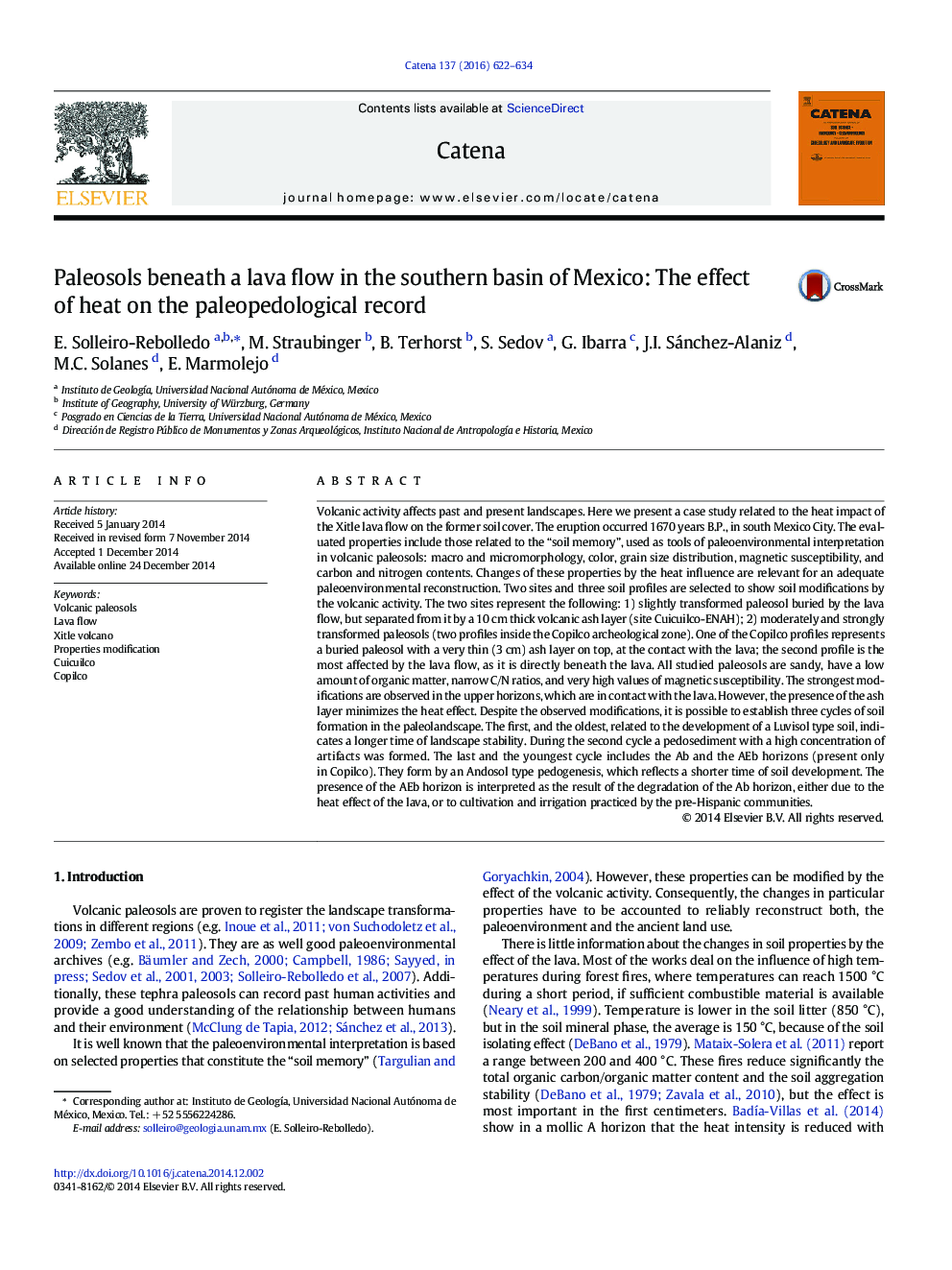| کد مقاله | کد نشریه | سال انتشار | مقاله انگلیسی | نسخه تمام متن |
|---|---|---|---|---|
| 6408036 | 1629215 | 2016 | 13 صفحه PDF | دانلود رایگان |
- Change of paleosol properties beneath a lava flow was evaluated.
- The properties have been modified by heat.
- The change evaluation is important for paleoenvironmental reconstructions.
- The studied paleosols provide paleoenvironmental and former land use information.
Volcanic activity affects past and present landscapes. Here we present a case study related to the heat impact of the Xitle lava flow on the former soil cover. The eruption occurred 1670 years B.P., in south Mexico City. The evaluated properties include those related to the “soil memory”, used as tools of paleoenvironmental interpretation in volcanic paleosols: macro and micromorphology, color, grain size distribution, magnetic susceptibility, and carbon and nitrogen contents. Changes of these properties by the heat influence are relevant for an adequate paleoenvironmental reconstruction. Two sites and three soil profiles are selected to show soil modifications by the volcanic activity. The two sites represent the following: 1) slightly transformed paleosol buried by the lava flow, but separated from it by a 10 cm thick volcanic ash layer (site Cuicuilco-ENAH); 2) moderately and strongly transformed paleosols (two profiles inside the Copilco archeological zone). One of the Copilco profiles represents a buried paleosol with a very thin (3 cm) ash layer on top, at the contact with the lava; the second profile is the most affected by the lava flow, as it is directly beneath the lava. All studied paleosols are sandy, have a low amount of organic matter, narrow C/N ratios, and very high values of magnetic susceptibility. The strongest modifications are observed in the upper horizons, which are in contact with the lava. However, the presence of the ash layer minimizes the heat effect. Despite the observed modifications, it is possible to establish three cycles of soil formation in the paleolandscape. The first, and the oldest, related to the development of a Luvisol type soil, indicates a longer time of landscape stability. During the second cycle a pedosediment with a high concentration of artifacts was formed. The last and the youngest cycle includes the Ab and the AEb horizons (present only in Copilco). They form by an Andosol type pedogenesis, which reflects a shorter time of soil development. The presence of the AEb horizon is interpreted as the result of the degradation of the Ab horizon, either due to the heat effect of the lava, or to cultivation and irrigation practiced by the pre-Hispanic communities.
Journal: CATENA - Volume 137, February 2016, Pages 622-634
